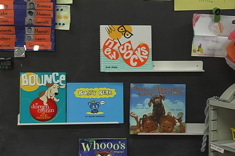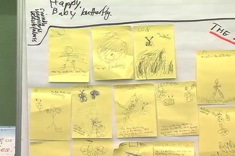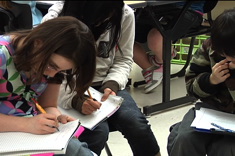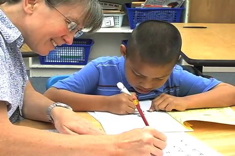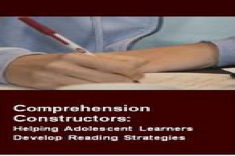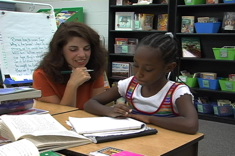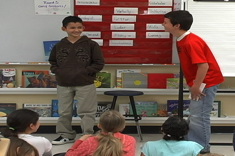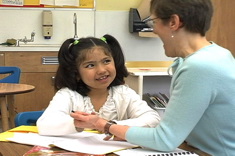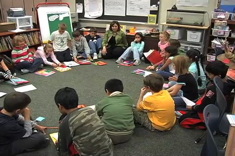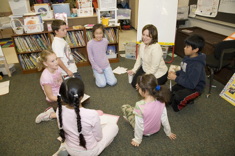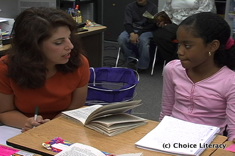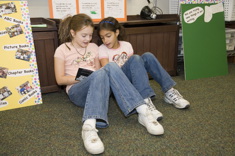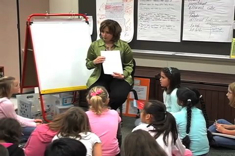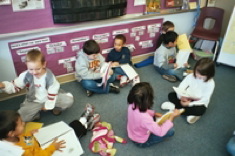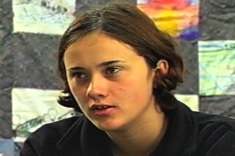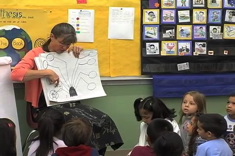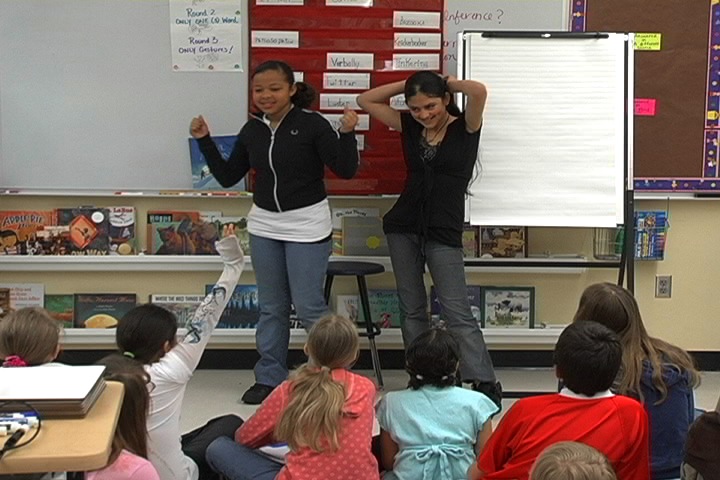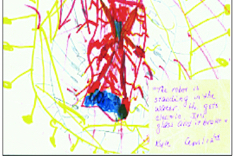Teaching Writing
Everyone who writes for Choice Literacy loves teaching writing, because we all write ourselves. We know it is "hard fun," as Donald Murray famously said—exasperating and exhilarating at the same time. The writing workshops you will read about here and see in our videos are busy, noisy, vibrant places. And most days, we wouldn't want to be anywhere else than in the midst of 'em! Here is where you'll find our latest discoveries, insights, and occasional boneheaded mistakes in teaching writing.
Latest Content
Tips from the Pros on Starting Your Own Writer’s Notebook or Teaching Journal
If you asked yourself, “What in this world do I never want to forget?” what might go in your notebook? Brenda Power offers routines and rhythms to write like the pros.
Planning for a Year of Author Studies (TEMPLATE)
Meaningful reading, writing, speaking, and listening comes out of thoughtfully planned author studies. Gayle Gentry shares her thinking and planning.
Creating Anchor Charts with Sticky Note Responses from Young Readers
Over-sized sticky notes are a great learning tool for kindergartners. In this video, Andie Cunningham demonstrates how she uses them with her students.
Up Gross and Personal: Dealing with Dicey Topics in Writing Workshops
Even teachers with a high tolerance for the disgusting can get a little squeamish at the topics students choose for writing workshops. What are the boundaries of good taste?
In the Zone: Conferring with a Young English Language Learner
Andie Cunningham confers with kindergartner Cristian within his "ZPD" – Zone of Proximal Development.
Two-Column Notes (E-GUIDE)
The Two-Column Notes eGuide has 18 different options for notes in professional development settings. These templates are helpful to use in staff meetings and study groups while watching videos, or to focus observations during classroom visits
Fonts Lesson: A Revision Strategy for Transitional Writers
Franki Sibberson teaches a minilesson on fonts as a revision strategy for her grades 3 and 4 students.
Conferring in the Zone: Vygotsky’s Zone of Proximal Development and Writing Conferences
The zone of proximal development continues to be an important frame for noting where writers are at and what's next. Ruth Shagoury lists questions at different phases of writing to help nudge writers forward.
Fonts: Small Group and Conferring with Intermediate Writers
In this follow-up to a whole class lesson and discussion of fonts, Franki Sibberson pulls together a group of 3rd and 4th graders from her class who have asked to be a part of a small group on fonts.
Designing Comprehension Constructors: Helping Adolescent Learners Develop Reading Strategies (E-GUIDE)
Comprehension constructors are a terrific tool for helping teens record their understanding.
Writing Conference Principles
Brenda Power and Ruth Shagoury describe the principles they live by when conferring with students.
The “All About Us” Board: Linking Literacy and Community Building All Year Long
Suzy Kaback has terrific tips for an ever-evolving “All About Us” bulletin board to use from the first day of school to the last.
Understanding the “Silent Period” with English Language Learners
Ruth Shagoury and Andie Cunningham explain how to support an English Language Learner who is not speaking with verbal and nonverbal communication strategies.
The Read-Around: Raising Writers
If there was a centerpiece to teaching writing that also brought students closer together, wouldn't you want to know about it? Read on about the Read-Around.
The Art of Listening in Writing Conferences with English Language Learners
Ruth Shagoury and Andie Cunningham share tips for mastering the art of listening in conferences with English language learners.
Writing Workshop Share: Talking About Revision Tools
In this video of a discussion after writing workshop in Franki Sibberson’s classroom, intermediate students share the tools they used in revision.
Guilty Pleasures
Aimee Buckner reveals her guilty pleasures, and finds they make for great writing fodder.
Organizing Writing Groups
Franki Sibberson describes how she organizing writing groups in her grades 3 and 4 classroom, and shares a video of a writing group considering leads.
Getting Started with Your Own Writer’s Notebook
Notebook Faker Extraordinaire Aimee Bucker writes about how she managed after years of false starts to build the writer's notebook habit one summer not long ago.
Using Foam Boards in Writer’s Workshop
Franki Sibberson explains how she extends the wall space in her classroom for instruction through the use of foam boards.
Assessing Student Writing
Don't let the pressure of standards and testing take away from the joys of writing workshop. Franki Sibberson explains how assessment helps her infuse energy and excitement into her writing program.
Mix It Up: Helping Young Writers Learn to Confer with Peers and Teachers
Ruth Shagoury models her own writing as a way to introduce the concept of conferring to young learners.
Introducing Bull’s-Eye and Waves Written Responses in Synthesis Work
Andie Cunningham explains the bull’s-eye and wave responses her kindergartners complete to demonstrate their understanding of synthesis. A video introducing the activity is included.
Writing About a War-Torn Home: Zerina Talks About Finding Her Writer’s Voice
In this interview with Ruth Shagoury, English language learner Zerina talks about her growing confidence as a writer as she shares her writing with high school classmates. She also talks about how her father encouraged her to write down her most poignant memory of war in their homeland, Bosnia.
Conferring with Anna
Anna is a five-year-old student in an Oregon kindergarten classroom who speaks Vietnamese at home. In this conference with Ruth Shagoury, she shares writing about her classmates and a snake, testing out her growing knowledge of the alphabet, sounds, and the purposes of writing.
Spacing Words: A Minilesson with Young Writers
In this two-minute video, Andie Cunningham reinforces the concept of spacing words with her kindergartners using her own writing and a brainstorming web.
Let’s Get Some Attitude
Shirl McPhillips recalls a junior high experience that promoted serious "attitude" and an uproar among her peers.
Listen In: Jeffry’s Ocean Story
Moving a child from simple to complex sentences is the goal in this second-grade writing conference.
Power Tools
Aimee Buckner shares three essential "power tools" for writers.
Tracking Young Children’s Writing and Development
Andie Cunningham and Ruth Shagoury share the assessment tools they use to track Andie’s kindergarten writers.
Browse Content By
Type
Category
- Assessment Tools
- Big Fresh Archives
- Booklists
- Choice Numeracy
- Classroom Design
- Common Core
- Community Building
- Conferring
- Content Literacy
- Digital Literacy
- English Language Learners
- Equity
- Family Relations
- Free Samples
- Guiding Groups
- Leadership
- Literacy Coaches
- Mentor Texts
- Minilessons
- New Teacher Mentors
- Podcasts
- Poetry
- Quote Collections
- Reading Strategies
- Self Care
- Struggling and Striving Learners
- Talking and Listening
- Teacher Study Groups
- Teaching Reading
- Teaching Writing
- Word Study and Vocabulary
Author
- Melissa Quimby
- Nawal Qarooni
- Gwen Blumberg
- Julie Cox
- The Lead Learners
- Hannah Tills
- Josie Stewart
- Ruth Metcalfe
- Mallory Messenger
- Becca Burk
- Jodie Bailey
- Vivian Chen
- Mary Brower
- Tiffany Abbott Fuller
- Stephanie Affinito
- Ruth Ayres
- Leigh Anne Eck
- Heather Fisher
- Shari Frost
- Julie Johnson
- Suzy Kaback
- Gigi McAllister
- Shirl McPhillips
- Melanie Meehan
- Cathy Mere
- Debbie Miller
- Tara Barnett and Kate Mills
- Tammy Mulligan
- Dana Murphy
- Bitsy Parks
- David Pittman
- Brenda Power
- Heather Rader
- Matt Renwick
- Mandy Robek
- Christy Rush-Levine
- Gretchen Schroeder
- Jen Schwanke
- Brian Sepe
- Katherine Sokolowski
- Stella Villalba
- Jennifer Vincent
Grade Level
Choice Literacy Membership
Articles
Get full access to all Choice Literacy article content
Videos
Get full access to all Choice Literacy video content
Courses
Access Choice Literacy course curriculum and training


